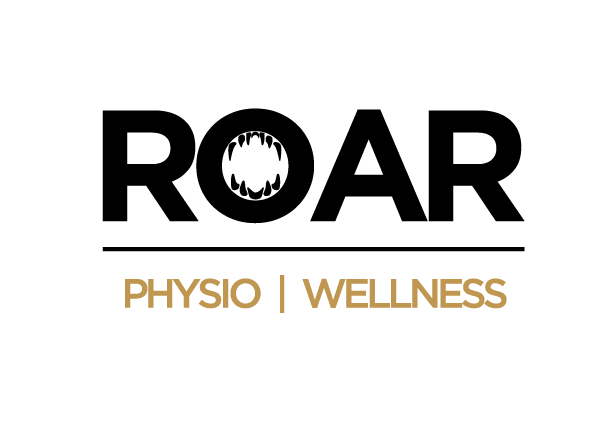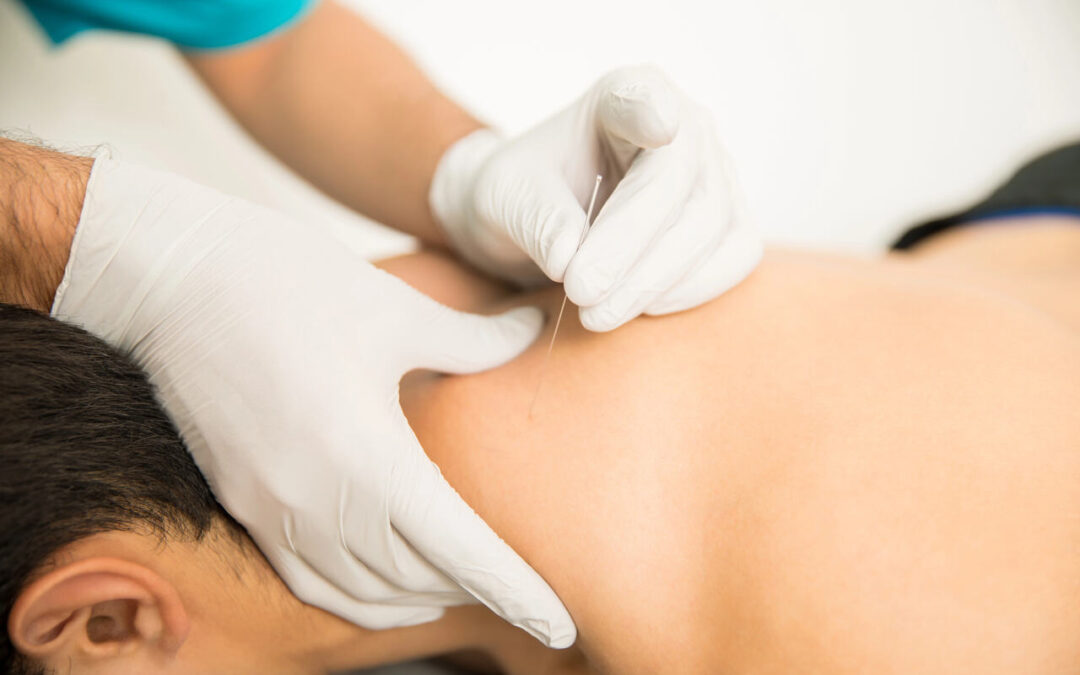Dry needling is a modern therapeutic technique used to treat muscle pain, tension, and dysfunction by targeting trigger points with fine, sterile needles. While it shares some similarities with acupuncture in appearance, dry needling is based on Western medical principles and focuses on restoring muscle performance and neuromuscular function. Often used as part of a broader treatment plan, dry needling can help relieve chronic pain, improve movement, accelerate recovery, and support athletic performance. In this blog, we’ll break down how dry needling works, what conditions it’s used for, and why it’s become such a valuable tool in rehabilitation and musculoskeletal care.
Exploring the Benefits of Dry Needling
Dry needling offers a range of therapeutic benefits, especially when integrated into a broader treatment plan. Its targeted approach allows therapists to treat specific muscle dysfunctions directly at their source. Some of the primary benefits include:
- Trigger Point Release: Dry needling is highly effective at releasing myofascial trigger points—tight bands within muscle tissue that contribute to pain and restricted movement.
- Pain Reduction: Inserting a needle into a tight or overactive muscle can cause a local twitch response, leading to immediate muscle relaxation and pain relief.
- Improved Range of Motion: By reducing muscular tension, dry needling helps restore mobility and joint function. This is especially helpful in areas with chronic stiffness or limited movement.
- Enhanced Blood Flow: Needling promotes local circulation, bringing oxygen and nutrients to tissues to support healing and recovery.
- Faster Recovery: Athletes and active individuals often report quicker return to activity after dry needling due to its ability to accelerate muscle repair.
- Reduced Muscle Tension: Releasing deep muscular knots allows for more effective movement and helps prevent further strain or injury.
- Neuromuscular Reset: The mechanical stimulus of the needle helps reset dysfunctional neuromuscular patterns and promote better muscle activation.
Dry needling is not a standalone cure but a valuable tool that enhances other treatment methods such as exercise therapy and manual techniques.
Types of Conditions That Respond Well to Dry Needling
Dry needling is used to treat a variety of musculoskeletal conditions that involve muscle pain, tightness, and movement dysfunction. It’s commonly used in both acute and chronic cases. Conditions that respond well include:
- Myofascial Pain Syndrome: Characterized by the presence of trigger points, this condition is one of the most common indications for dry needling.
- Tension Headaches: Trigger points in the neck and shoulder muscles can refer pain to the head, and dry needling can help alleviate this tension.
- Chronic Neck or Back Pain: Deep muscle dysfunction in these areas often causes persistent discomfort and mobility issues that respond well to needling.
- Shoulder Impingement or Rotator Cuff Injuries: Tightness in surrounding muscles can contribute to joint dysfunction and pain, which dry needling can relieve.
- Plantar Fasciitis: Addressing tightness in the calf and foot muscles can reduce tension on the plantar fascia.
- Tendinopathies: Conditions like patellar or Achilles tendinopathy may benefit from dry needling as part of a load management program.
- TMJ Dysfunction: Jaw pain and tightness caused by overactive masticatory muscles can be treated effectively with intraoral dry needling.
- Sciatica or Piriformis Syndrome: Releasing deep gluteal muscles helps reduce nerve compression and referred pain.
Dry needling is often used alongside stretching, strengthening, and postural training for a more comprehensive and lasting result.
Reducing Chronic Pain and Discomfort: How Dry Needling Helps
Dry needling can be an effective tool for reducing chronic pain, especially when integrated into a comprehensive treatment plan. It works by targeting areas of muscle tension and dysfunction that may not respond to traditional therapies. One of its primary effects is interrupting the pain signals that travel between the muscles and the nervous system, helping decrease sensitivity in painful areas. By releasing long-standing muscle tightness and trigger points, dry needling can improve comfort and restore movement. It also enhances local blood flow, allowing oxygen and nutrients to reach tissues that may have been deprived due to chronic tension. As pain decreases, people are often more willing and able to engage in strengthening and corrective exercises—key elements in long-term recovery.
In some cases, dry needling may also promote a calming effect on the nervous system, helping reduce tension throughout the body. Additionally, it can reduce referred pain by addressing its root cause in the muscles. While not a standalone fix, dry needling complements other therapies and can provide lasting relief when used as part of a personalized treatment approach.
Can Dry Needling Support Athletic Performance?
Athletes and physically active individuals can benefit greatly from dry needling, not just for recovery but also for optimizing function and performance. Its precise approach to muscle health offers the following advantages:
- Enhanced Muscle Function: By resetting overactive muscles and improving neuromuscular control, athletes may experience better strength, balance, and coordination.
- Injury Prevention: Addressing muscle tightness and correcting movement patterns early helps reduce the risk of overuse injuries or strain.
- Faster Recovery Between Sessions: Dry needling supports quicker resolution of post-workout soreness or minor strains, allowing for more consistent training.
- Targeted Muscle Activation: Therapists can use dry needling to stimulate weak or underactive muscles, improving movement efficiency and reducing compensatory patterns.
- Improved Flexibility: Loosening tight tissues can enhance flexibility and joint range, which is especially important in sports that demand full-body mobility.
- Reduced Muscle Fatigue: By promoting blood flow and reducing muscle adhesions, dry needling helps delay fatigue and improve endurance.
- Better Biomechanics: Athletes working on technique or form can benefit from improved muscle symmetry and activation after dry needling.
When integrated into a comprehensive athletic recovery strategy, dry needling becomes a useful performance tool—not just a treatment method.
Is Dry Needling a Safe Form of Treatment?
Dry needling is a safe treatment when performed by a licensed and properly trained healthcare professional. Therapists undergo post-graduate education focused on anatomy, needling technique, and safety procedures to ensure your well-being. Single-use, sterile needles are always used to eliminate the risk of infection. Side effects are typically mild and short-lived—most people may experience some temporary soreness, light bruising, or fatigue after a session.
Safety also involves careful planning and clinical decision-making. Therapists assess each individual’s medical history and current health to determine if dry needling is appropriate. Conditions like needle phobia, bleeding disorders, or certain systemic illnesses may require additional precautions or alternative treatments. Needling is performed with precise technique and anatomical awareness to avoid sensitive structures. After treatment, people are given guidance on what to expect and how to manage any post-session soreness. While serious complications are rare, practitioners are trained to monitor for adverse reactions and respond appropriately. When part of a comprehensive care plan, dry needling is a reliable and low-risk way to improve muscle health and reduce discomfort.
Get Your Roar Back
Dry Needling vs. Acupuncture: Understanding the Differences
Though dry needling and acupuncture both involve the use of thin, solid needles, they differ significantly in theory, technique, and clinical purpose. Understanding these distinctions helps clarify how each approach fits into a broader healthcare context:
- Theoretical Foundation: Dry needling is grounded in Western medicine and focuses on treating neuromuscular dysfunction, trigger points, and anatomical structures. In contrast, acupuncture is based on Traditional Chinese Medicine (TCM) and targets meridians to balance the body’s energy, or “Qi.”
- Application Technique: In dry needling, needles are inserted into specific areas of muscle tension to elicit a mechanical response and relieve dysfunction. Acupuncture, on the other hand, places needles along energy pathways, often more superficially, to influence overall well-being.
- Clinical Goals: Dry needling aims to reduce muscle tightness, relieve pain, and restore movement patterns. Acupuncture seeks to address a wide range of conditions, from pain to digestive or emotional issues, by influencing the body’s energy systems.
- Professional Use: Dry needling is typically performed by physiotherapists or other rehabilitation professionals. Acupuncture is administered by trained acupuncturists, often within holistic or integrative care settings.
Despite using similar tools, the intent, philosophy, and method of each practice make them distinct.
Can Dry Needling Be Used Alongside Physiotherapy?
Absolutely—dry needling is most effective when combined with a comprehensive physiotherapy program. It is rarely used as a standalone intervention and works best as part of a multi-modal treatment approach. Its complementary role includes:
- Enhancing Manual Therapy Outcomes: Dry needling helps release deep muscle tension, allowing manual techniques to be more effective.
- Supporting Exercise Progressions: By reducing pain and improving mobility, it enables people to progress through rehab exercises with better form and comfort.
- Improving Neuromuscular Control: Targeting inhibited or overactive muscles supports better movement retraining during physiotherapy sessions.
- Reducing Compensatory Patterns: When used to normalize muscle tone, dry needling helps eliminate imbalances that interfere with exercise execution.
- Promoting Faster Results: Integrated treatment often leads to quicker reductions in pain and improvements in function.
- Facilitating Return to Activity: By addressing muscular restrictions early, therapists can move clients to more active phases of recovery sooner.
Physiotherapists often use dry needling at specific points during treatment to unlock barriers to progress and support long-term outcomes.
How Quickly Can You Feel the Benefits of Dry Needling?
The benefits of dry needling can often be felt soon after treatment, though the timeline varies depending on the individual and the nature of their condition. Some people report immediate improvements in mobility or a noticeable reduction in pain right after a session, particularly when trigger points are effectively released. However, it’s also common to experience mild soreness similar to post-exercise fatigue within the first 24 to 48 hours. Over the following days, people typically notice a progressive reduction in pain and muscle tightness, along with better range of motion and improved movement patterns.
For chronic or complex conditions, multiple sessions may be needed to achieve consistent results. In cases of acute injury or isolated muscle dysfunction, relief may be felt more quickly. Long-term benefits are often enhanced when dry needling is combined with therapeutic exercise and movement retraining. Factors like age, activity level, overall health, and injury history also affect how quickly results appear. Your therapist will adjust your treatment plan based on how your body responds to ensure safe and effective progress.
Don’t Let Pain Ruin Your Day
Whether you’re managing pain, dealing with movement restrictions, or working toward peak physical performance, understanding your treatment options is key to lasting recovery. Dry needling offers a targeted, research-backed approach to muscle health and functional rehabilitation.
At Roar Physio | Wellness, our team integrates dry needling into personalized care plans to help people move better, feel better, and stay active. Reach out today to learn how this powerful technique can support your unique recovery journey.

